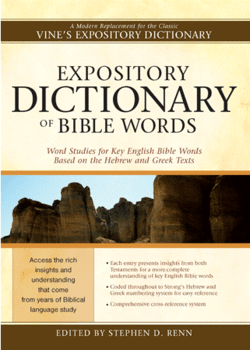Hi guys.
Question: I recently purchased
Vine’s Complete Expository Dictionary of Old and New Testament Words
and
New Strong's Dictionary of Hebrew and Greek Words
What are these types of books called? Dictionary's or Lexicons or Concordance?
I am enjoying them a lot, but I am aware that they may be dated and there are better variants available.
What would be a better option to purchase that will be helpful for my word study?
I've got my eye on [ Expository Dictionary of Bible Words: Word Studies for Key English Bible Words Based on the Hebrew and Greek Texts 2005 ]
Is in a good choice?

Thanks heaps